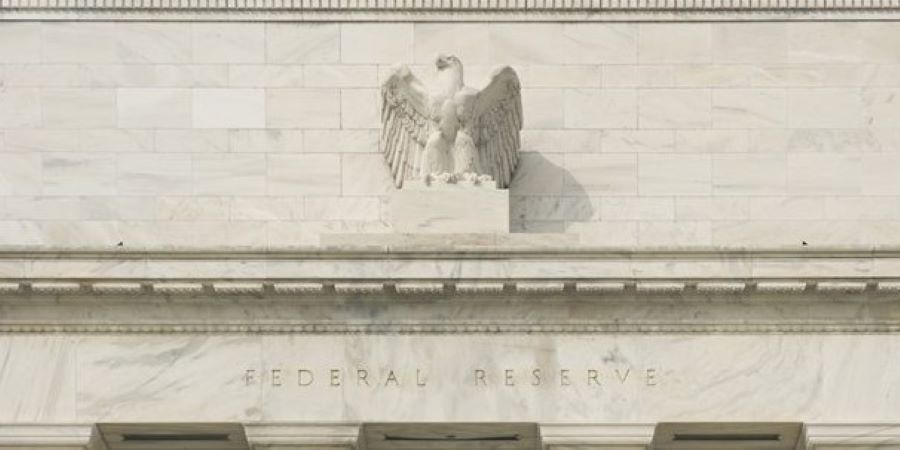by Kristina Hooper, Global Market Strategist, Invesco Ltd., Invesco Canada
Last week saw a massive sell-off for stocks globally. The initial trigger seems to have come from U.S. Federal Reserve Chair Jay Powell’s press conference following the June 9-10 meeting of the Federal Open Market Committee (FOMC). Below, I summarize five key points from that press conference and the key takeaways I heard while “reading between the lines.”
1. Despite a better-than-expected jobs report, the Fed believes the economic situation remains grim
Powell called the May U.S. employment report “a welcome surprise,” but noted that with well more than 20 million people displaced in the labor market, the U.S. has “a long road” ahead: “… this is the biggest economic shock, in the U.S. and in the world, really, in living memory. We went from the lowest level of unemployment in 50 years to the highest level in close to 90 years, and we did it in two months, extraordinary.”
He noted that many forecasters had been expecting a bottom for the economy around the middle of the year (although with a huge range of uncertainty) with a recovery in the second half – and this job report suggests that the labor market may have possibly hit bottom in May. However, “we’re not going to overreact to a single data point,” Powell said. “We’re going to be very careful about reaching any conclusions about good data or bad data …”
Powell estimated that millions of people may not be able to return to the jobs that they lost during this crisis. “… there may not be a job in that industry for them for some time. There will eventually be, but it could be some years before we get back to those people finding jobs.”
Reading between the lines. The Fed’s sober economic outlook rattled markets, but I believe Powell was talking to an audience of one – Senate Majority Leader Mitch McConnell. Powell believes more fiscal stimulus is needed, so he had to stress that one good jobs report should not deter Congress from approving more aid.
2. The Fed did not change long-run employment forecasts
Despite the trauma to the U.S. economy, the Fed has not yet changed its long-run employment forecast. Powell said “it’s way too early” to alter long-run forecasts.
Reading between the lines. This makes sense, in my view, given that so many factors could impact the longer-term economic forecast, including whether or not more fiscal stimulus is forthcoming.
3. The Fed believes the crisis response has been good, but more fiscal stimulus is needed
Powell was quick to point out that “the government response has been so fast and so forceful,” with approximately US$3 trillion in fiscal spending authorized by Congress so far, which represents 14% of U.S. gross domestic product. He was very complimentary: “… it’s in a class by itself, in terms of both the size and the speed of it, and it’s also pretty innovative.”
However, he also noted that Congress may need to provide more spending support to complement the Fed’s lending support. “The Fed cannot grant money to particular beneficiaries. We can only create programs or facilities with broad-based eligibility to make loans to solvent entities with the expectation that the loans will be repaid. Many borrowers will benefit from these programs, as will the overall economy. But for many others, getting a loan that may be difficult to repay may not be the answer. In these cases, direct fiscal support may be needed. Elected officials have the power to tax and spend and to make decisions about where we, as a society, should direct our collective resources. The CARES Act and other legislation provide direct help to people, and businesses, and communities. This direct support can make a critical difference, not just in helping families and businesses in a time of need, but also in limiting long-lasting damage to our economy.”
“It’s possible that we will need to do more, and it’s possible that Congress will need to do more … Somehow, we’ve got to all, as a country, get those people back to work.”
Reading between the lines. Powell has tried to do everything in his power to encourage Congress to provide more fiscal stimulus without directing it to do so (as he noted, “that’s going to be their decision.”) In testimony before Congress earlier in the spring, Powell was clear in his view that stimulus today will be far cheaper than the costs of allowing the economy to fall into deeper difficulty. It’s better to keep a worker in a job than have them lose their job and wait to find another one. It also does not make good policy to allow good companies to go out of business permanently.
4. The Fed plans to remain very accommodative for a long time to come
“… we’re going to be here with our tools supporting this economy for as long as it’s needed.”
“We’re not even thinking about thinking about raising rates.”
Reading between the lines. It appears rates are going to be lower for a lot longer. The FOMC’s policy prescription is that rates will remain at current levels through 2022. It’s important to note that not one FOMC member projected rate hikes this year or next, and only two members would prescribe a hike in 2022. The Fed will also maintain quantitative easing (QE) purchases at current levels – US$80 billion per month for Treasuries and US$40 billion per month for mortgage-backed securities. While I don’t expect rates to go negative, we are in an environment of financial repression, and I expect yield scarcity to be more intense. I believe the search for yield will become even more difficult, but important for many investors.
5. The Fed is willing to do whatever it can to support the economy
Powell said it seems “quite likely” that – even after the U.S. sees strong job growth – a significant number of people “will still be struggling to find jobs, and we’ll still be providing strong accommodation for that.”
He noted that the Fed has learned a number of things over the course of the last few years, including the fact that unemployment can be in the 3% to 3.5% range for a couple of years, with only modest moves in wages and almost invisible moves in inflation. “… that was not anybody’s understanding of the structure of economy, I think, or most people’s anyways. So, we can use our tools to support the labor market and support the economy.”
“… and we are going to be deploying our tools – all of our tools to their full extent in pursuit of those goals, however long it takes.”
Reading between the lines. Powell is channeling his “inner Mario Draghi,” leading an extremely activist Fed. The Fed is doing far more than it did during the global financial crisis – and far more quickly. The FOMC is very sensitive to the needs of Main Street – Powell even noted that the Fed is looking at how to help nonprofit organizations by including them in existing Fed facilities or creating a new one. All this accommodation is skewing the risk-reward profiles for asset classes. The bias for stocks remains upward, in my view, as the Fed has made risk assets less risky with all its accommodation.
This post was first published at the official blog of Invesco Canada.















